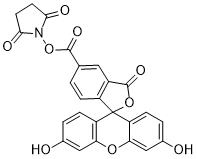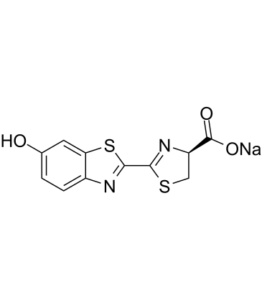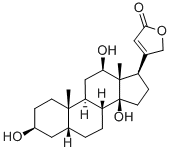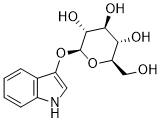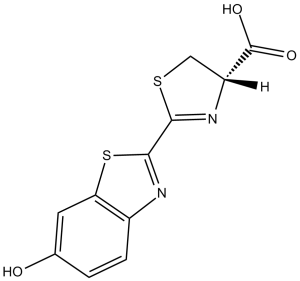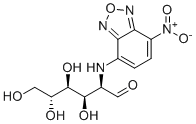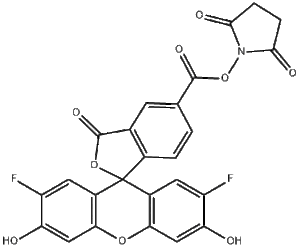5-FAMSE is a cell-permeable green fluorescent labeling reagent used for labeling peptides, proteins and nucleotides, demostrating excitation and emission maxima are 494 and 520 nm, respectively. 5-FAM SE can react with amines and can yield stable amine conjugates.
D-Luciferin sodium is novel and potent heterocyclic light-emitting compound and a natural substrate of luciferase enzyme used to detect cell activity. It requires ATP for its reaction, emitting a greenish-yellow luminescence at a peak wavelength of approximately 530 nm. The salt form of luciferin dissolves in water or other typical buffers.
Digoxigenin (Lanadigigenin) is steroid compound used as a probe to detect different viruses in many molecular biology applications.
Indican (Indoxyl-β-D-glucoside) is a naturally occurring plantsglycoside of indoxyl and a colourless organic compound found in Indigofera. It is a precursor of the dyesindigo and indirubin.
D-Luciferin is a popular and cell-permeable bioluminescent substrate of luciferase in the presence of ATP with a Km of approximately 2 μM, it is used in luciferase-based bioluminescence imaging and cell-based high-throughput screening applications. D-luciferin could emit lights upon oxidative decarboxylation in the presence of ATP. D-luciferin provides a bioluminescent signal for in vivo and […]
2-NBDG is a fluorescent analogue of glucose and an indicator used for measuring glucose uptake by bacteria and live mammalian cells and in tumor biopsies. The uptake of 2-NBDG is competitively inhibited by D-glucose, but not L-glucose or sucrose, in E. coli.
OG 488 SE (Oregon green 488 succinimidyl ester) is a fluorescent pH indicator.
